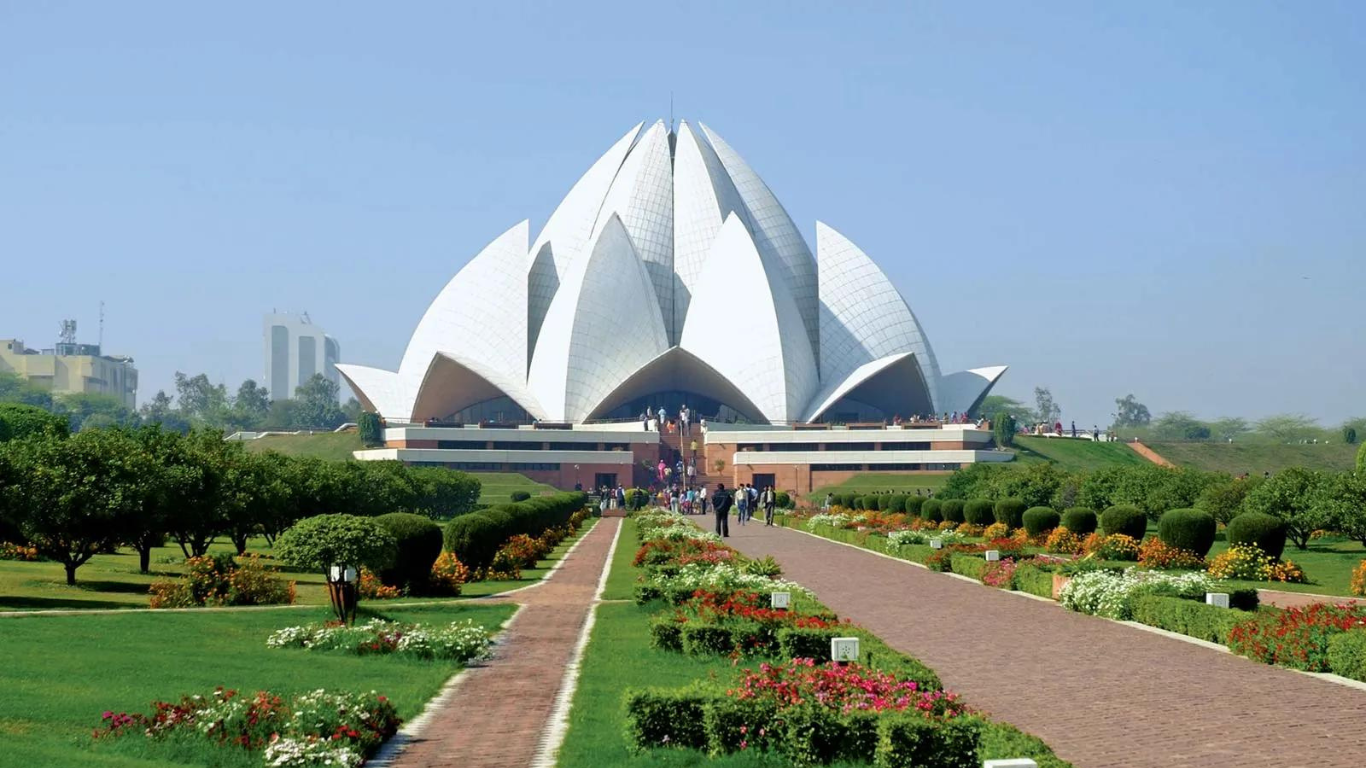


Welcome to the serene embrace of Lotus Temple Delhi, a transcendent symbol of unity and spirituality. As one of the seven principal Baha’i temples globally, this architectural marvel beckons visitors from around the world. Let's delve into the captivating insights about Lotus Temple, exploring its architecture, interiors, and the profound message it conveys.
Welcome to the serene embrace of Lotus Temple Delhi, a transcendent symbol of unity and spirituality. As one of the seven principal Baha’i temples globally, this architectural marvel beckons visitors from around the world. Let's delve into the captivating insights about Lotus Temple, exploring its architecture, interiors, and the profound message it conveys.
Embracing the vision of Fariborz Sahba, the Lotus Temple stands as a testament to architectural brilliance. Constructed with meticulous effort, the temple's lotus flower shape symbolizes harmony and oneness across various world religions. The use of white marble from Penteli Mountain, Greece, adds to its mesmerizing beauty.
The Lotus Temple comprises three tiers, each adorned with nine petals, meticulously crafted from white reinforced concrete and marble. Overcoming the challenge of creating a design with no straight lines, the architects achieved a remarkable double-curved exterior. The lotus petals, supported by nine arches, allow sunlight to fill the auditorium, creating a serene ambiance.
The heart of the Baha’i temple, the Inside Lotus Temple, stands tall at approximately 40 meters, accommodating around 2500 people. Surrounded by ponds and gardens at each of its nine gates, the structure seems to float in a vast body of water. Notably, the temple was a pioneer in Delhi, harnessing solar energy for its electricity needs.
Spanning 26 acres, the Lotus Temple complex encompasses administrative buildings, libraries, and restrooms. The entire layout, adorned in white marble, contributes to the temple's enchanting allure. Its significance extends beyond architectural beauty, as it was the first temple in Delhi to utilize solar electricity.
A testament to its inclusive spirit, the Lotus Temple is open to visitors without any entry fee. However, photography enthusiasts need a special permit. The temple's popularity is evident, with millions of visitors from across the globe exploring its architectural and spiritual magnificence.
Lotus Temple Today:
As of today, the Lotus Temple continues to be a beacon of tranquility and spirituality in Delhi. Garnering numerous accolades for its architecture, the temple has become a global symbol of interfaith harmony. It remains one of the most visited structures, with millions of visitors seeking solace in its serene surroundings.
Fascinating Facts and Benefits:
Beyond the Surface
Delve into fascinating facts about the Lotus Temple, from being featured on Indian postage stamps to its symbolic significance in various religions. Discover the profound benefits of visiting this spiritual oasis, where silent contemplation and meditation take precedence over ritualistic ceremonies.
For those planning a visit, reaching the Lotus Temple is hassle-free. Whether by metro or private cab, the temple is easily accessible, with the Kalkaji Mandir metro stop on the Violet line being the closest. Embrace the tranquility of this contemporary symbol of unity in the heart of bustling Delhi.
Wrap up your visit to Lotus Temple with a sense of tranquility and appreciation for its architectural grandeur. Beyond its physical beauty, the Lotus Temple stands as a testament to the harmony that can exist among diverse beliefs. Make sure to include this iconic Baha’i House of Worship in your Delhi travel plans, where spirituality and architectural splendor converge.

Lifestyle Articles
Other Famous Monuments Articles